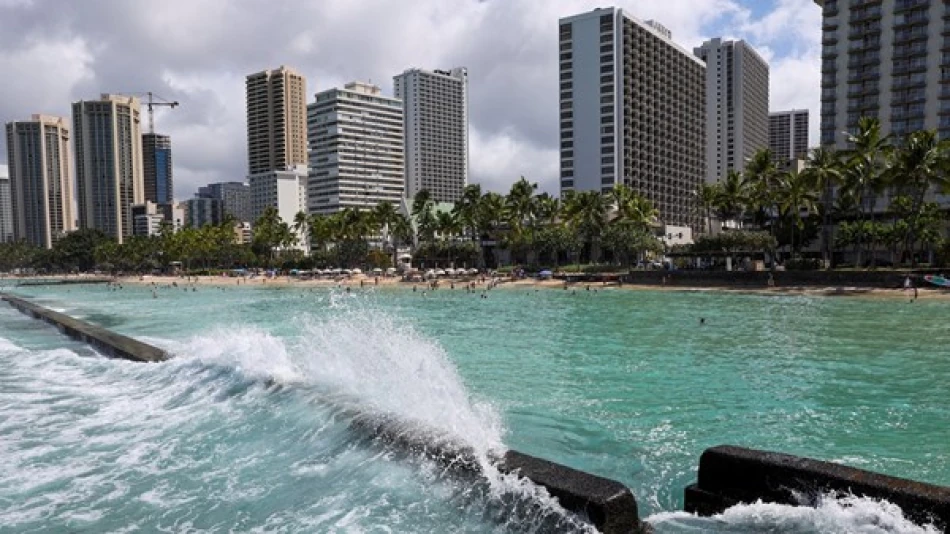
Urgent Call to Strengthen Global Early Warning Systems Against Rising Earthquake and Tsunami Threats
Global Weather Chief Warns: 250,000 Deaths Show Tsunami Alert Systems Are Still Failing
The head of the World Meteorological Organization is calling for urgent improvements to international early warning systems after decades of devastating earthquakes and tsunamis have claimed over 250,000 lives and caused $100 billion in damages. Dr. Abdullah Ahmed Al Mandous warns that despite technological advances, coastal communities remain dangerously vulnerable to seismic disasters that continue to strike with deadly frequency.
The Deadly Pattern: Why Current Systems Aren't Enough
The statistics paint a sobering picture of humanity's ongoing struggle against natural disasters. Over the past 50 years, more than 140 earthquakes exceeding magnitude 8.0 have struck worldwide, with most generating tsunamis that devastated coastal regions. The most catastrophic events—Chile's 1960 earthquake, the 2004 Sumatra disaster, and Japan's 2011 Fukushima earthquake—demonstrate how quickly underwater seismic activity can transform into existential threats for millions of people.
Dr. Al Mandous emphasized that warnings alone don't save lives unless they arrive on time and meet effective ground-level preparedness. The recent 8.8-magnitude earthquake in Russia's Kamchatka Peninsula, which generated multi-meter tsunami waves, highlighted both the potential and limitations of current alert systems.
The Technology Gap: Smart Buoys vs. Response Speed
Modern tsunami warning systems rely on sophisticated networks of seismic monitoring stations and intelligent ocean buoys that can detect underwater earthquakes and measure wave patterns in real-time. However, the effectiveness of these systems depends critically on three factors: data analysis speed, infrastructure readiness, and community response capabilities.
The challenge isn't just detecting tsunamis—it's processing the information fast enough to provide meaningful warning time to coastal populations. In many developing nations and island states, the gap between detection and effective evacuation remains dangerously wide.
UN's Ambitious 2027 Target: Early Warning for Everyone
The World Meteorological Organization has placed the UN's "Early Warning for All" initiative at the center of its priorities, aiming to ensure every person on Earth has access to disaster warnings by 2027. This represents a massive logistical and technological undertaking, particularly for the world's most vulnerable regions.
"Early warning is a human right, not a luxury," Al Mandous stated, reflecting a shift toward viewing disaster preparedness as a fundamental aspect of human security rather than an optional government service.
The UAE Model: Regional Leadership in Disaster Preparedness
The United Arab Emirates has emerged as a regional leader in supporting prediction and early warning efforts, hosting advanced research centers and initiatives that enhance preparedness across the Middle East and beyond. This positions the UAE alongside other forward-thinking nations like Japan and Chile, which have invested heavily in seismic monitoring after experiencing devastating earthquakes.
Economic and Strategic Implications
The $100 billion in damages from major seismic events over five decades represents just the direct costs—indirect economic impacts from supply chain disruptions, tourism losses, and reconstruction needs often multiply these figures. The 2011 Fukushima disaster, for example, affected global automotive and electronics manufacturing for months due to Japan's central role in these supply chains.
For governments and investors, the message is clear: investing in resilient infrastructure and early warning systems is far more cost-effective than post-disaster reconstruction. Insurance markets are increasingly factoring seismic risks into coverage decisions, making preparedness a competitive economic advantage.
The Collective Action Challenge
Al Mandous outlined a three-pronged approach requiring coordinated global effort: governments must accelerate investment in resilient infrastructure and strengthen legislation while expanding data-sharing cooperation; institutions need to support research and technology development; and individuals must learn safety procedures and spread awareness.
The urgency is mathematical: "Every second between an earthquake and a warning builds resilience or loses it. Every proactive step today means a greater chance of survival tomorrow."
As climate change potentially influences seismic activity patterns and rising sea levels amplify tsunami impacts, the window for building comprehensive early warning systems is narrowing. The 2027 target isn't just ambitious—it may be essential for preventing future disasters from reaching the catastrophic scale of past events.
 Layla Al Mansoori
Layla Al Mansoori







